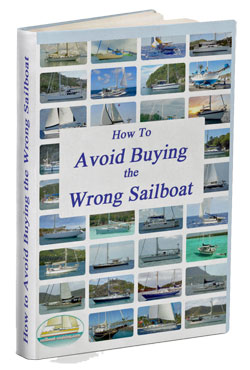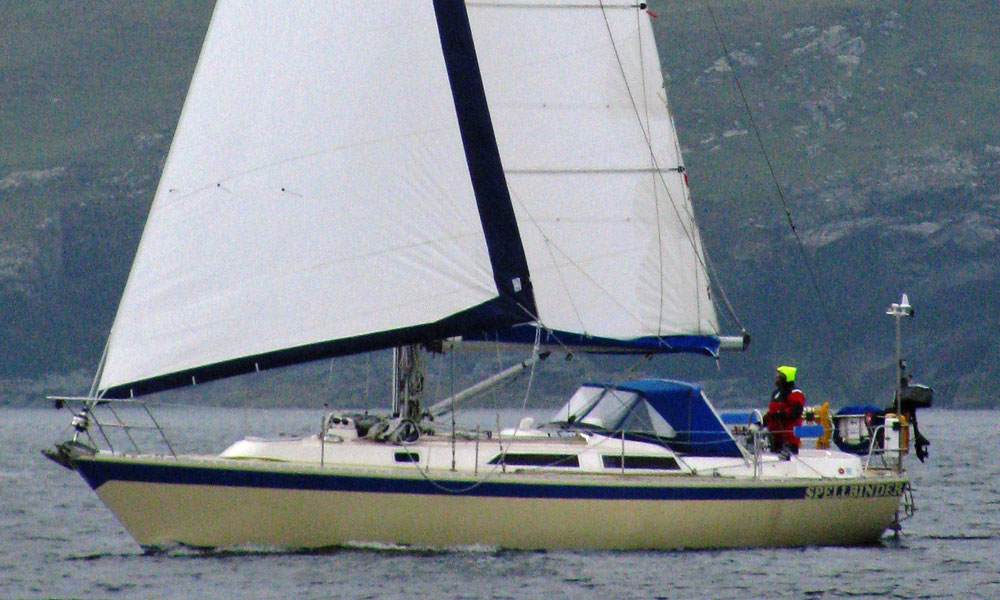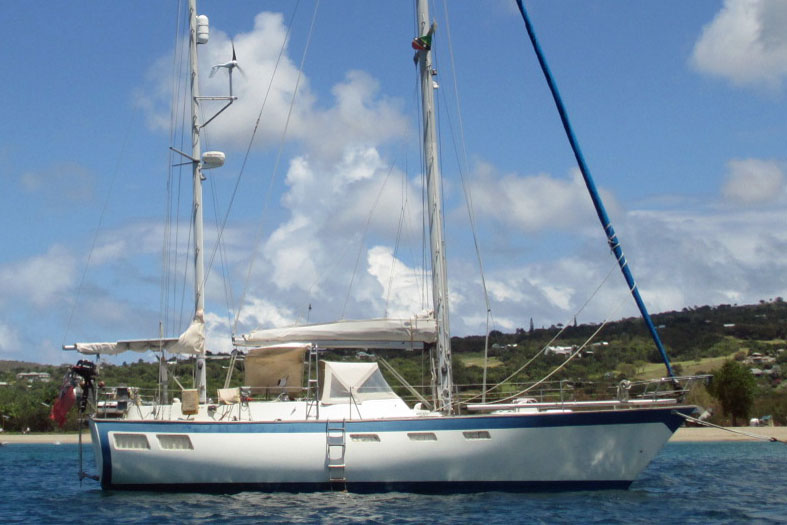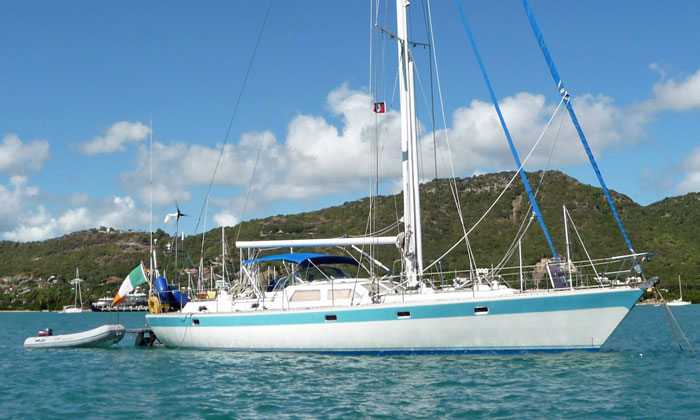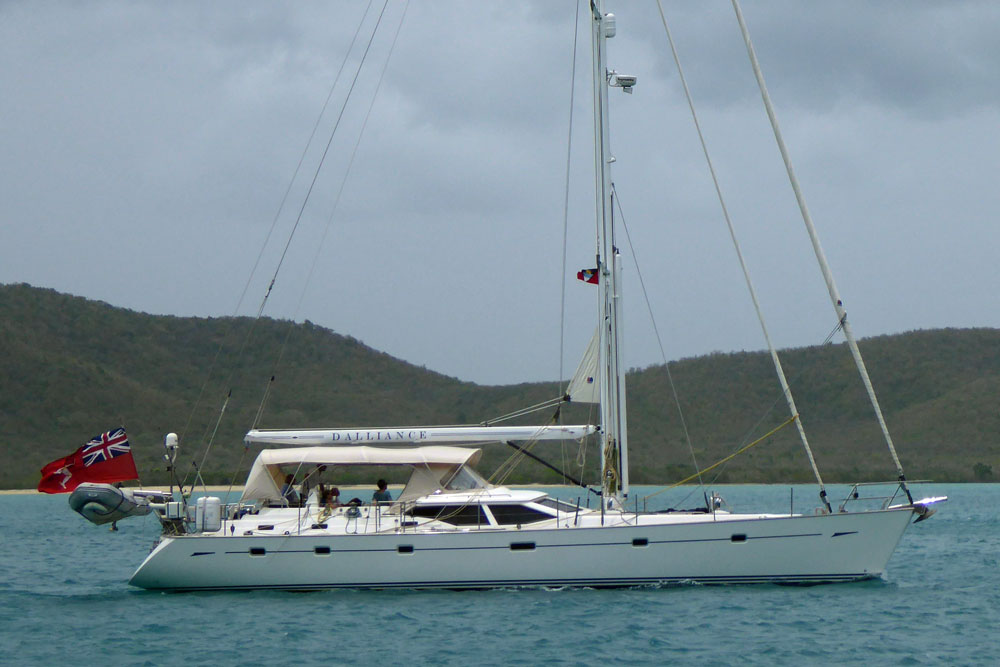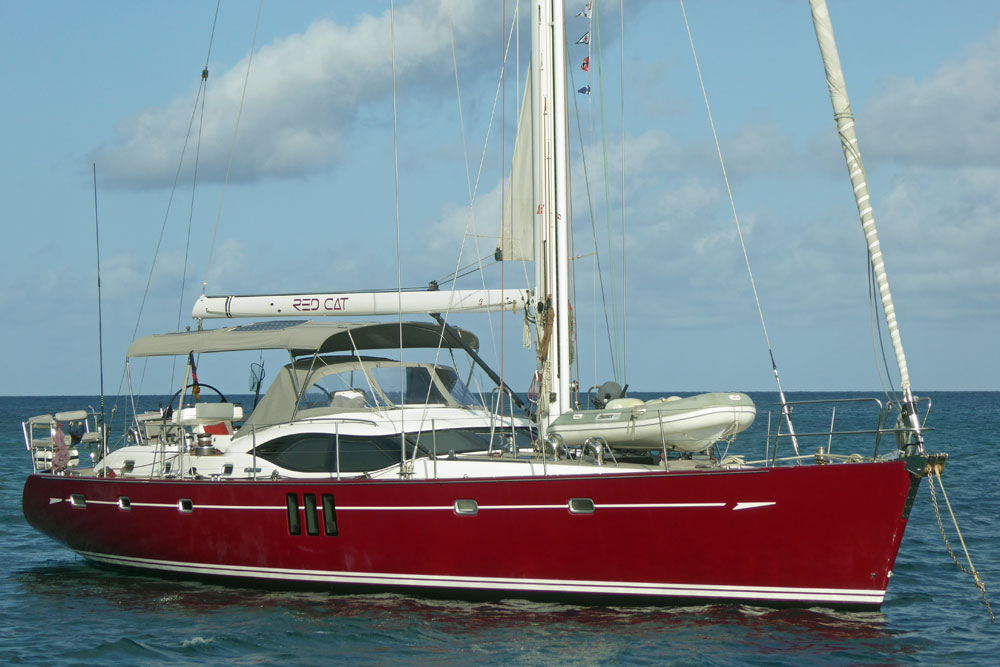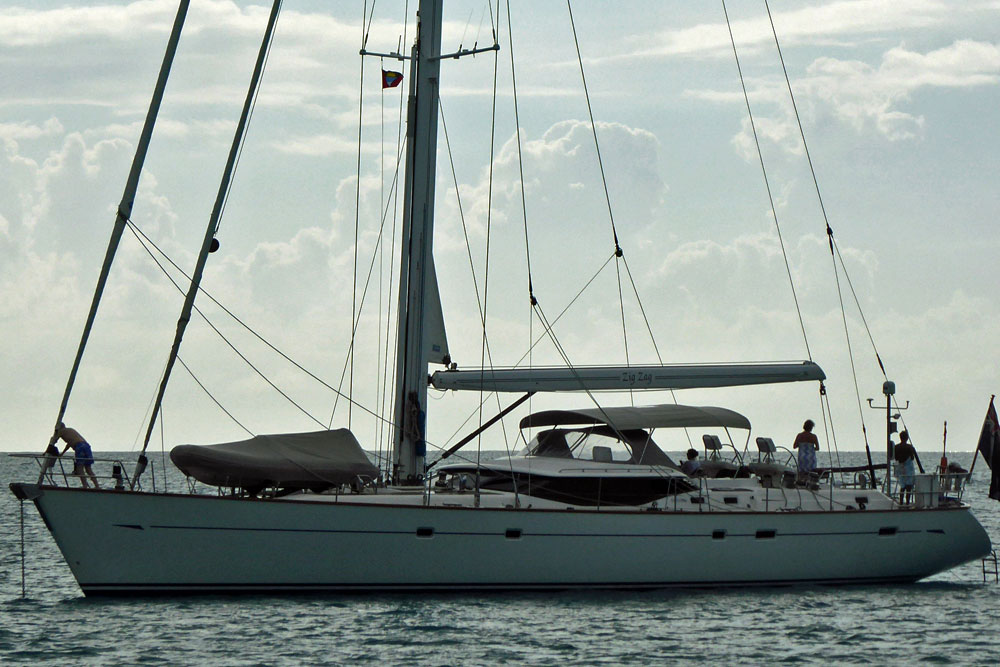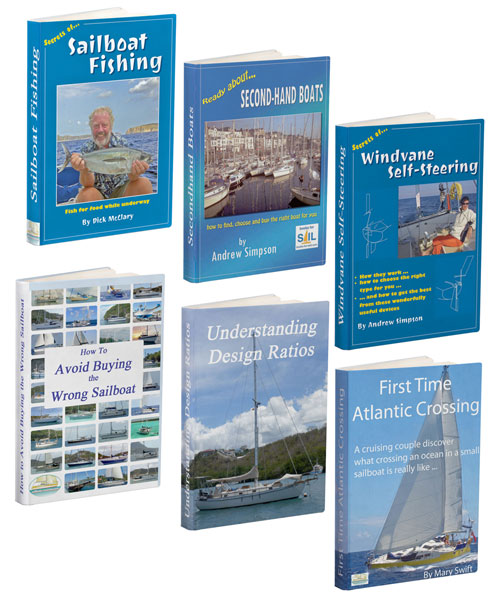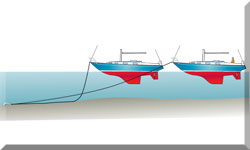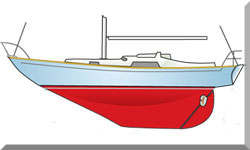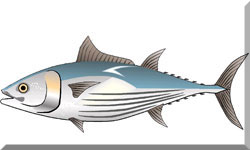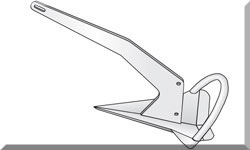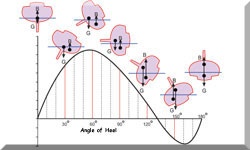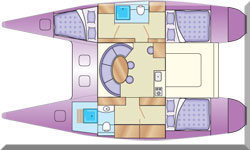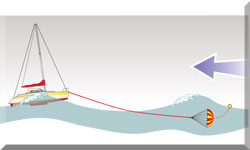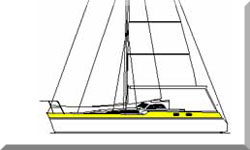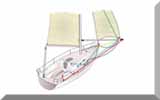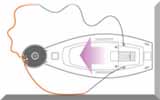- Home
- Cruiser Yachts over 55'
- Oyster 575
The Oyster 575 Sailboat
Specs & Key Performance Indicators
The Oyster 575, a centre-cockpit cutter, was designed by Rob Humphreys and built in the UK by Oyster Marine Ltd.
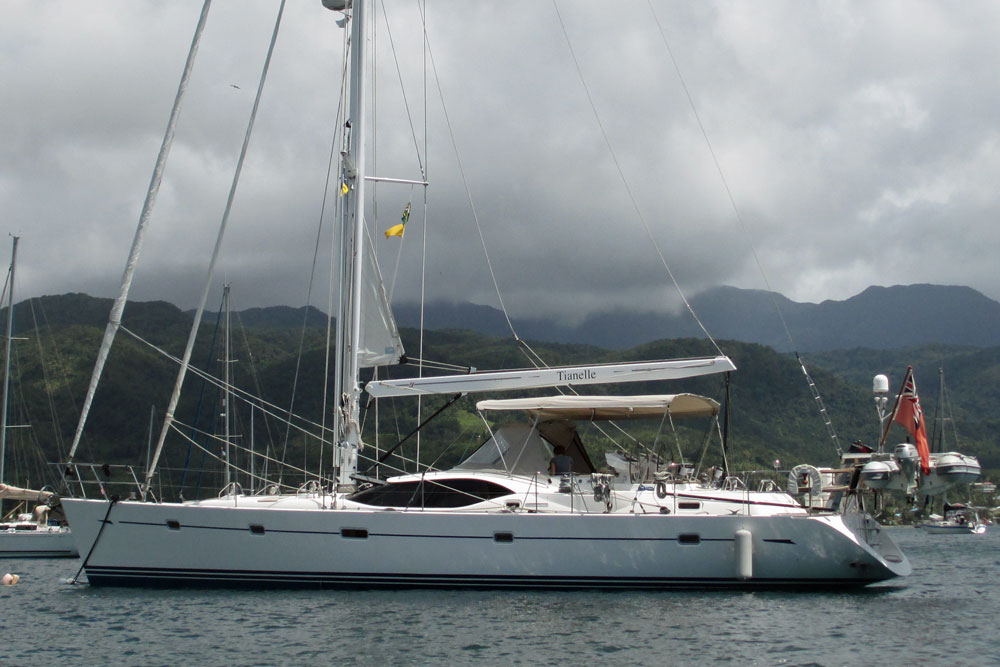 An Oyster 575
An Oyster 575Published Specification for the Oyster 575
Underwater Profile: Fin keel and spade rudder
Hull Material: GRP (Fibreglass)
Length Overall: 58'8" (17.9m)
Waterline Length: 51'6" (15.7m)
Beam: 16'5" (5.0m)
Draft: 8'10" (2.7m)
Rig Type: Cutter
Displacement: 58,422lb (26,500kg)
Designer: Rob Humphreys
Builder: Oyster Marine (UK)
Year First Built: 2010
Published Design Ratios for the Oyster 575
1. Sail Area/Displacement Ratio: 22.4
2. Ballast/Displacement Ratio: 30.6
3. Displacement/Length Ratio: 191
4. Comfort Ratio: 40.5
5. Capsize Screening Formula: 1.7
Summary Analysis of the Design Ratios for the Oyster 575
1. A Sail Area/Displacement Ratio of 22.4 suggests that, in the right hands, the Oyster 575 will have enough performance to leave most other sailboats of similar waterline length well astern.
2. A Ballast/Displacement Ratio of 30.6 would usually mean that the Oyster 575 would have a tendency to heel uncomfortably in a gust, and need to be reefed early to keep her sailing upright in a moderate breeze.
However, as she has much of her ballast concentrated in a bulb at the foot of her keel, she's likely to be considerably stiffer than her published Ballast/Displacement Ratio might suggest.
3. A Displacement/Length Ratio of 191, tells us the Oyster 575 is a light-to-moderate displacement sailboat. If she's loaded with too much heavy cruising gear her performance will suffer to a degree.
4. Ted Brewer's Comfort Ratio of 40.5 suggests that crew comfort of an Oyster 575 in a seaway is similar to what you would associate with the motion of a heavy bluewater cruising boat. Pitching and rolling will be well damped - your cup of coffee on the salon table stands a reasonable chance of staying there in most conditions.
5. The Capsize Screening Formula (CSF) of 1.7 tells us that an Oyster 575 would be a safer choice of sailboat for an ocean passage than one with a CSF of more than 2.0.
Cruisers' Questions about this Sailboat...
How many versions of the Oyster 575 sailboat were produced and how do they differ?
How many versions of the Oyster 575 sailboat were produced and how do they differ?
There are three versions of the Oyster 575 sailboat: the Standard version, the Keel and centerboard version, and the Shoal draft version. They differ mainly in their keel design and draft.
- The Standard version has a L-shaped keel (with bulb) and a draft of 8’ 11” (2.7m);
- The Keel and Centerboard version has a centerboard inside of a short fin-keel and a draft that can vary from 12’ 6” (3.82m) to 5’ 5” (1.65m). This version also has dual rudders;
- The Shoal Draft version has a shoal keel (with bulb) and a draft of 6’ 9” (2.06m).
All versions have the same hull length, beam, mast height, rigging type, and upwind sail area. They also share the same elegant interior design and spacious layout.
How much does a secondhand Oyster 575 cost?
How much does a secondhand Oyster 575 cost?
The Oyster 575 is a luxury sailboat that was built by Oyster Yachts in the UK between 2011 and 2018. It is a popular bluewater cruising yacht that offers a high level of comfort, safety, and quality. The price of an Oyster 575 varies depending on the year, condition, and location of the boat, but according to some online sources, it can range from around £750,000 to £1,750,000.
What are the main features and specifications of the Oyster 575 sailboat?
What are the main features and specifications of the Oyster 575 sailboat?
The Oyster 575 has a composite hull and deck made of GRP, carbon and Kevlar, and a fin keel with a spade rudder. She has a masthead sloop rig with an upwind sail area of 2,097 ft² (194.8 m²). She can accommodate up to eight guests in four cabins, including a spacious aft owner's cabin with an ensuite head. She has a large centre cockpit with twin wheels, a walkthrough access to the aft deck, and a raised saloon with panoramic windows.
How does the Oyster 575 perform under sail?
How does the Oyster 575 perform under sail?
The Oyster 575 is a fast and comfortable passage-maker that can handle various sea conditions. She has a long waterline length of 51’7” (15.72m), a light displacement of 60,076 lb (27,250 kg), and a ballast ratio of 30%. She has a powerful sail plan with a fully battened mainsail, a self-tacking jib, and an optional staysail and gennaker. She has electric winches, hydraulic furlers, and push-button controls for easy handling. She can reach speeds of over 10 knots in moderate winds and has a good pointing ability.
What are some of the advantages and disadvantages of the Oyster 575 compared to other similar boats?
What are some of the advantages and disadvantages of the Oyster 575 compared to other similar boats?
The Oyster 575 is a luxurious, modern, and well-equipped bluewater cruiser that offers a high level of comfort, safety, and quality. She has a spacious and elegant interior with fine joinery, leather upholstery, and custom fittings. She has ample stowage space, ventilation, and natural light throughout. She has a reliable and quiet engine, a generator, an inverter, and a watermaker for self-sufficiency. She also has a high resale value and a strong reputation among Oyster owners.
Some of the disadvantages of the Oyster 575 are her high price tag, her limited cockpit space due to the twin wheels, her steep companionway stairs, and her lack of dedicated wet hanging locker.
The above answers were drafted by sailboat-cruising.com using GPT-4 (OpenAI’s large-scale language-generation model) as a research assistant to develop source material; to the best of our knowledge, we believe them to be accurate.
Other sailboats in the Oyster range include:
Recent Articles
-
Marine Water Heating Systems: Free Hot Water from Your Boat's Engine
Dec 03, 25 05:06 PM
Tap into your engine's heat to get free hot water on board. An experienced ocean sailor's guide to marine water heating systems, calorifiers & safety. -
Marine Watermakers: An Offshore Sailor’s Guide & Practical Tips
Dec 03, 25 04:31 AM
Boost your yacht's range with Marine Watermakers. A Yachtmaster's guide to choosing, installing, and maintaining reverse osmosis desalinators for reliable, fresh water on long passages. -
Optimising Your 12-Volt Boat Fridge for Offshore Sailing & Efficiency
Dec 01, 25 11:05 AM
Master your 12-Volt Boat Fridge system. A guide for experienced sailors covering mechanics, installation, troubleshooting, and advanced electrical efficiency on extended voyages.
